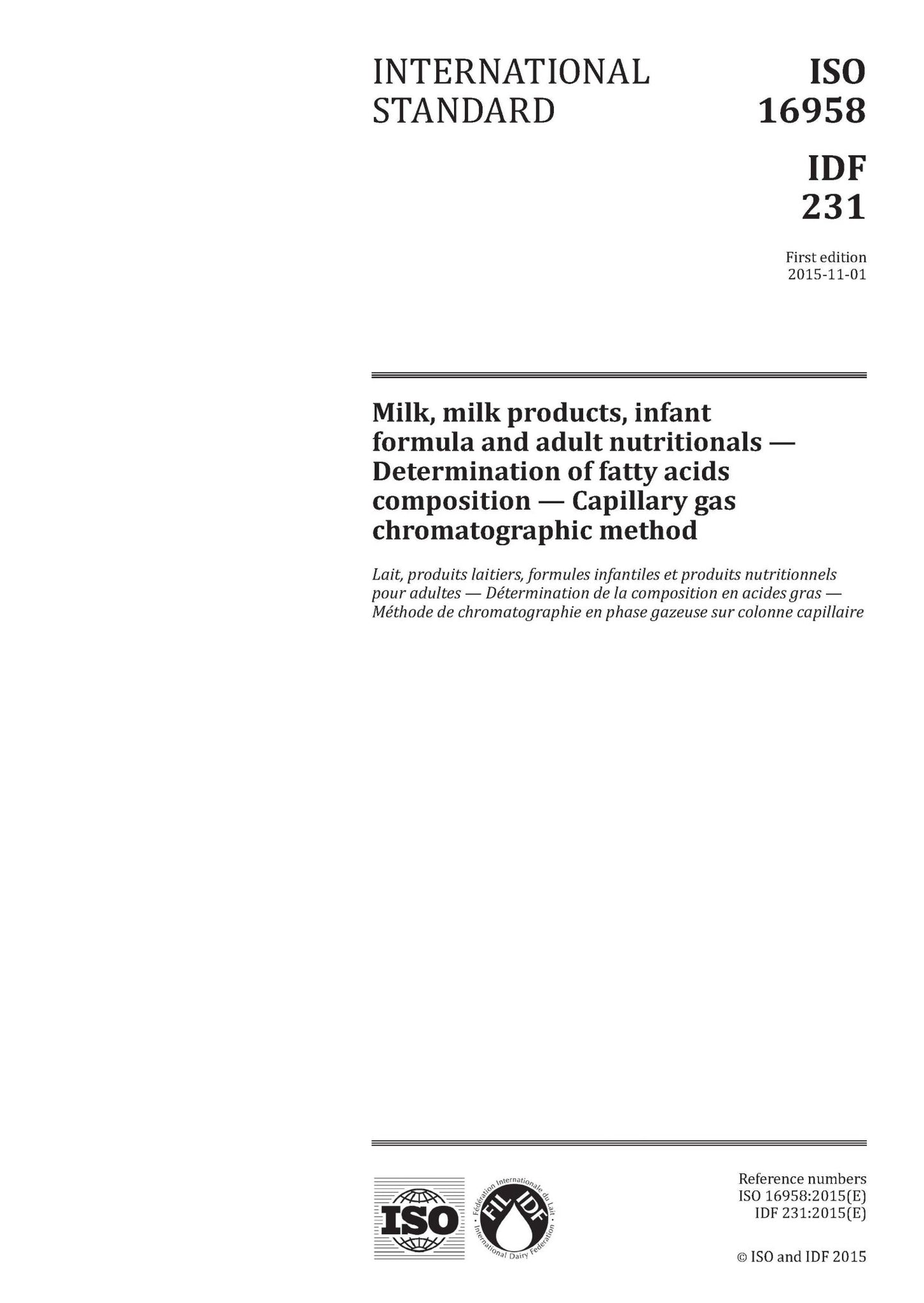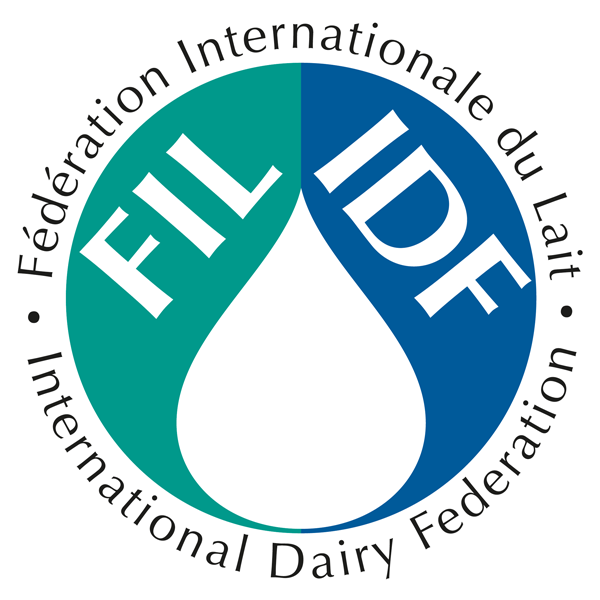ISO 16958 | IDF 231: 2015 - Milk, milk products, infant formula and adult nutritionals - Determination of fatty acids composition - Capillary gas chromatographic method
Couldn't load pickup availability
Document info
| pages | 45 |
|---|---|
| published date | 24 March 2015 |
| reference | For paper version\, please contact us at Orders@fil-idf.org |
Publication description
This International Standard specifies a method for the quantification of individual and/or all fatty acids in the profile of milk, milk products, infant formula and adult nutritional formula, containing milk fat
and/or vegetable oils, supplemented or not supplemented with oils rich in long chain polyunsaturated fatty acids (LC-PUFA). This also includes groups of fatty acids often labelled [i.e. trans fatty acids (TFA), saturated fatty acids (SFA), monounsaturated fatty acids (MUFA), polyunsaturated fatty acids (PUFA),
omega-3, omega-6 and omega-9 fatty acids] and/or individual fatty acids [i.e. linoleic acid (LA), α-linolenic acid (ALA), arachidonic acid (ARA), eicosapentaenoic acid (EPA) and docosahexaenoic acid (DHA)].
The determination is performed by direct transesterification in food matrices, without prior fat extraction, and consequently it is applicable to liquid samples or reconstituted powder samples with water having total fat ≥ 1,5 % m/m.
The fat extracted from products containing less than 1,5 % m/m fat can be analysed with the same method after a preliminary fat extraction using methods referenced in Clause 2. Dairy products, like soft or hard cheeses with acidity level ≤ 1 mmol/100 g of fat, can be analysed after a preliminary fat extraction using methods referenced in Clause 2. For products supplemented or enriched with PUFA with fish oil or algae origins, the evaporation of solvents should be performed at the lowest possible
temperature (e.g. max. 40 °C) to recover these sensitive fatty acids.


